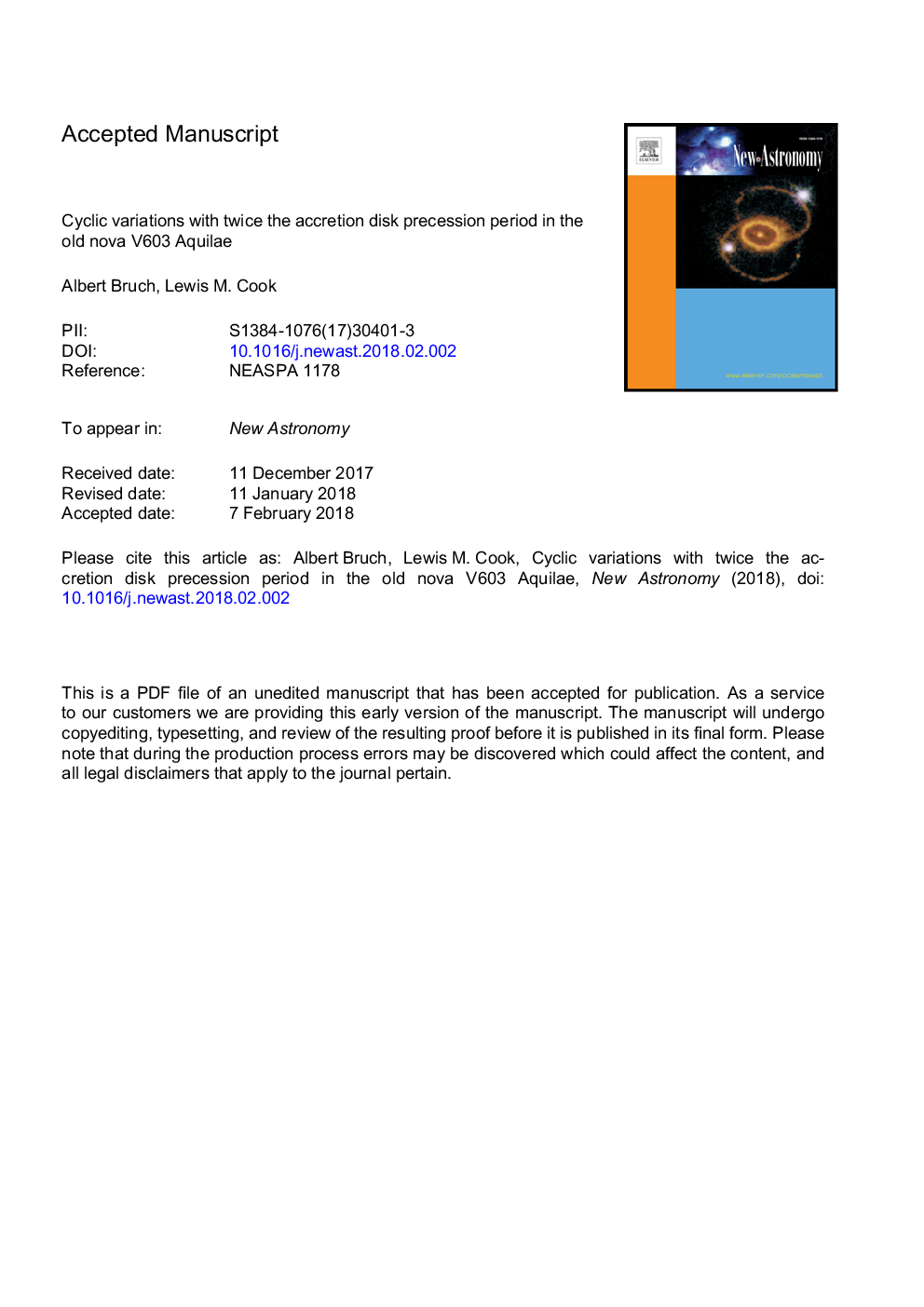| Article ID | Journal | Published Year | Pages | File Type |
|---|---|---|---|---|
| 8141286 | New Astronomy | 2018 | 9 Pages |
Abstract
A dense series of long and high time resolution light curves of the old nova V603 Aql, covering 22 nights (19 of which are consecutive), are analyzed in order to identify and characterize variations on the time scale of hours and days. The well known 3.5 h modulation, observed many times in the past and considered to be due to a long lasting, albeit not entirely stable superhump, is recovered at a period of 0.1453 days and an amplitude of â¯â¼â¯ 0.m062. Most interesting, however, is the detection of highly significant brightness variations with an amplitude of â¯â¼â¯ 0.m050 and a period of 5.85 days which is to a very high precision equal to twice the beat period between the orbital and the superhump period. The latter is generally interpreted as the precession period of an eccentric accretion disk. The origin of these long term variations remains unknown.
Keywords
Related Topics
Physical Sciences and Engineering
Physics and Astronomy
Astronomy and Astrophysics
Authors
Albert Bruch, Lewis M. Cook,
